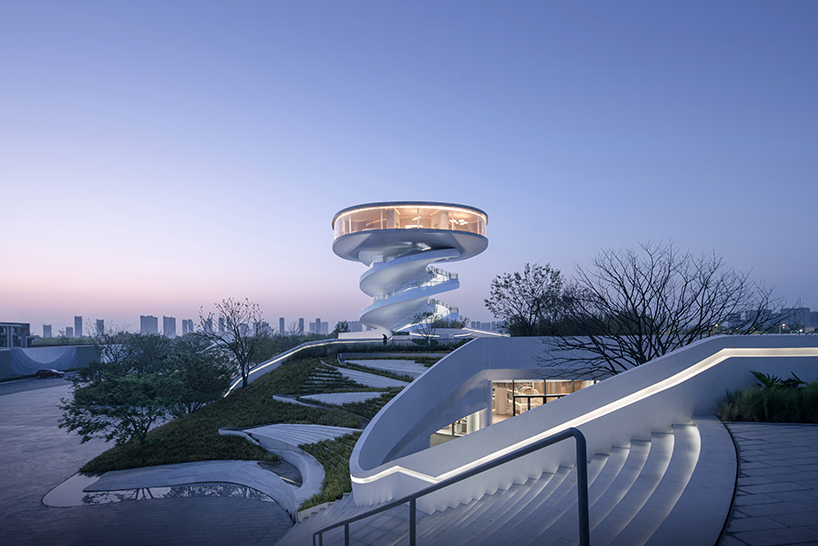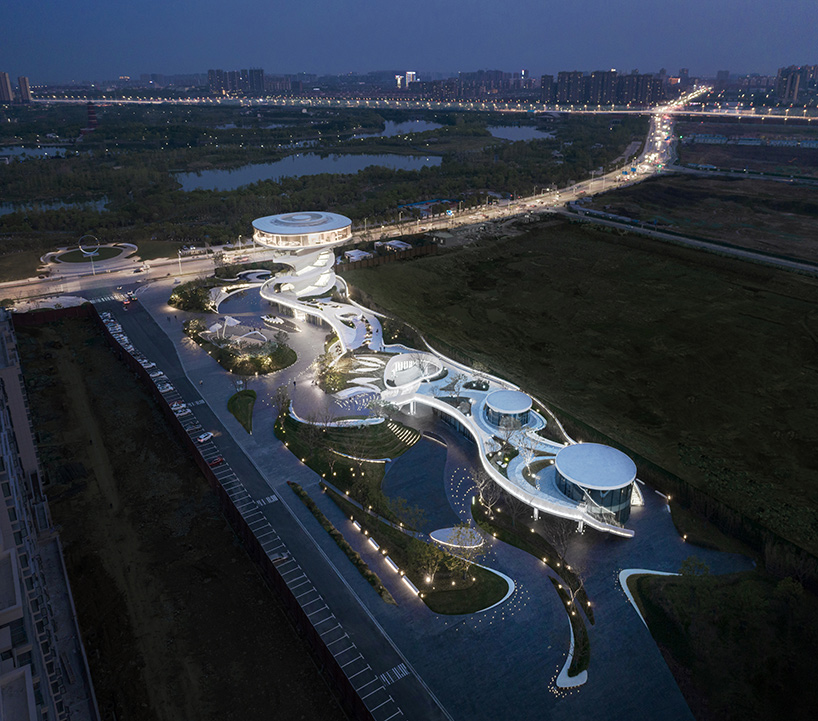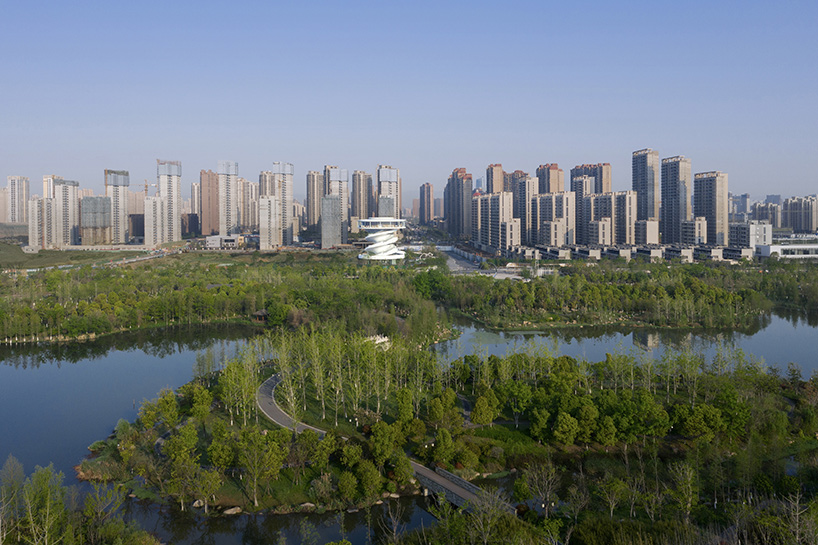New Spiraling Observation Tower Uses Water, Earth and Sky in Design
Nanchang Waves is a spiraling observation built for the Nordic Office of Architecture in China’s Jiangxi province. The tower uses 3 natural elements, water, earth and sky, to achieve its breathtaking design.

The front square, the facilities and of course, the spiraling observation tower. The city of Nanchang directly next to the tower has a history in ancient water culture and the landscape of the adjacent lake. The tower is designed to integrate with the city and responds to the natural qualities of the land and history.

“Each of the landscape nodes contain functions for people of different ages and provide interesting and memorable spatial experiences,” explain the Nanchang Waves architects.
The observation tower is the most prominent architectural design of the offices, but the facilities also contain interesting features such as an accessible rooftop.

According to the design team, “The landscape of the front square extends above the three-dimensional space of the architecture, through a slowly unfolding outdoor amphitheater.”
Everything on the site, including the retail and commercial facilities, are linked together both visually and functionally.

The spiraling tower is a magnificent and contemporary landmark for the city of Nanchang. This tower along with Nanchangs historic towers, such as Wanshou Pagoda, accompany one another and can be seen from the facility.
The spiraling tower contains a double spiral staircase along with an orb shaped observation deck for visitors.

“When reaching the top, one enters the observation deck, where people can get an unparalleled view of the natural landscape of the nearby wetlands, admire the city skyline in the distance, and experience the changing landscape at sunrise and sunset,” says architects and designers.